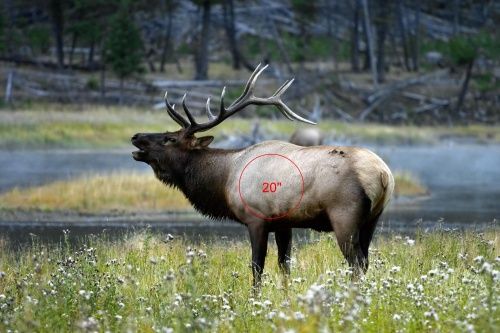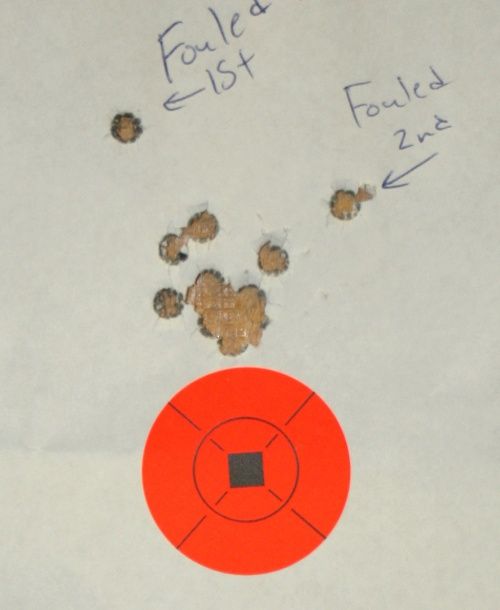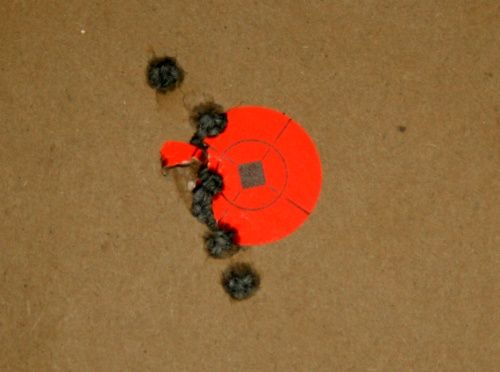Before we start shooting long range, it's important that we do our research and select the proper platform on which to build our shooting system. There are many different rifles built for many different purposes. Many become works of art. For a long range shooting system, I have five points on a checklist to qualify a rifle for long range.
These tests are functional, and must be addressed regardless of the rifles looks or pedigree. Most of these tests are not pass/fail, but more qualitative. Once you have evaluated the rifle you should be confident in its fit and function, and more importantly, you will know its limitations and its behavior. Long range shooting requires a more dedicated shooter that is willing to put in the time practicing and learning How to Shoot, but just as importantly when not to shoot.
To begin we can examine the overall selection of a rifle platform for a long range shooting system. Will it deliver adequate velocity at the ranges we want to shoot to ensure consistent bullet performance? Can we comfortably shoot the rifle in extended practice sessions without developing a flinch from excessive recoil or muzzle blast? Adding weight to a firearm reduces recoil and has the added benefit of more stability in real shooting situations.
Every one would agree that the heavier the firearm, the easier it is to shoot. That's why most shooting competitions have weight restrictions. The trade-off for many hunters is portability—an 18 lb gun would be an excellent shooter, but it would be noticeably heavy. We may need to pack our rifles up and down mountains, sometimes for days on end. So lighter will be better...but we still want to be prepared for a long distance shot if it is required. All that hiking with an ultralight gun is useless if you can't make the shot when it is presented. So we need a heavier gun than is more shootable. Keep in mind that the Marine Sniper M-40A3 weighs 16.5 lbs and many marines liked the old M-40A1 because it was more maneuverable at 14.5 lbs.

If you are going to pack your rifle way back there, carry one heavy enough to guarantee it is capable of making the shot when presented.
With a firearm that has been designed for the purpose, an overall firearm weight with scope of about ten pounds seems to be a good balance of shootability and portability. We are talking about a practical minimum weight for 1000 yard field shooting. With the right balance and ergonomics, a firearm of this weight will handle like one weighing pounds less. A stock that is designed for shooting from supported prone and sitting positions (rather than standing off hand) will also enhance a shooters ability to place his shots where they count. There are some factory rifles that can make this weight, but many are designed as light weight guns for carry or snap shooting, and are ill suited for precision shooting in real field situations.
Once you've selected your firearm from your guns safe (or your custom rifle builder) I have four tests you should put your rifle through to evaluate its effectiveness and potential for long range shooting. With the idea that we need to be able to place our first shot where it counts every time and from all positions—not just once in a while from a bench with shooting rests. The more I shoot the more I realize how high a standard this is, and how much work in practice and preparation it takes to achieve it.
The first qualifier is the firearms overall accuracy. We need to measure how the gun shoots for a 5-shot group at 100 yards. One Minute of Angle (MOA) subtends approximately 1" at 100 yards, 2" at 200, 3" at 300, etc. If you have a rifle that will shoot one MOA from a bench for five shots—consistently, not just once—you have a great shooting rifle. How do we determine how far we can shoot a rifle with that level of accuracy?
We need to identify the difference between accuracy potential from a bench and what you will really shoot in field shooting situations and conditions. It depends on the game or target size, and the shooting conditions. Until you have documented otherwise, a conservative rule of thumb for field accuracy would be to double what you can do on the bench. For a one MOA ( 1" at 100 yards) gun that means you may only be able to hold two MOA in a field shooting situations. Two MOA is 20" at 1000 yards.
A big bull elk has a vital area of about 20". A consistent one MOA gun is minimal for a shooting elk at 1000 yards. A one MOA rifle will shoot two MOA in the field. Two MOA is 2” at 100 yards or 20” at 1000 yards. For a mule deer with a 15" kill zone, 750 yards would be a practical maximum. Once you have proved and improved your field shooting, you will be able to document your field performance so you can know exactly your maximum range for performance on game animals. This rule of thumb operates under the premise that we should be striving for ethical one shot kills.

An elk has a kill zone of approximately 20 inches. That is two Minutes of Angle.
Once we have determined our rifles potential for accuracy, we need to evaluate even further to measure the first shot behavior of our rifles. One shot kills are great, first shot kills are perfection, and in todays hunting ethic are to be striven for. Many rifles require multiple fouling shots after cleaning before they settle down and start shooting consistently—usually no more than a half dozen. Some rifles may only require one shot—or none. For those firearms (usually custom barreled) proper documentation of the first shot point of impact may allow carrying the firearm cleaned and un-fouled in the field with a known correction for the first shot. I have enough things to worry about when I'm hunting, so I routinely carry my firearm “dirty" or fouled in the field. I've documented its first shot behavior, and I know no correction is required.
Some guns may have an errant first shot—even from a cold-fouled bore. This should be examined in every potential long range hunting rifle. It will require multiple trips to the range to accomplish, but it is a necessary step in qualifying your rifle for long range. Shoot your rifle at a long range target 200-300 yards is good. Examine the point of impact of the first shot from your cold (ambient temperature) fouled barrel relative to a five shot group fired immediately afterwards. If your barrel becomes too hot, limit your groups to a first shot followed by a three shot group. Record your results from multiple firing sessions on different days. You will be able to neglect the difference in POI if it is small enough, or if it is not, you will have to account for it in your firing solution. In some cases, you may wish to have the firearm examined for a barrel replacement. For ethical long range shooting you need to eliminate it or account for it, but first you need to measure it.

First shot point of impact at 200 yards - note the .75 inch eight shot group that follows.
The next issue involves repeat shot behavior—this can be an insidious problem. It is easier to detect at longer ranges (400 yards and beyond), and it can be confused with large extreme spreads in your muzzle velocity. Stringing shots is usually caused by uneven barrel bedding which is easily fixed, or by residual stresses in the rifle barrel which is not. It can also by caused by an extremely off center bore. One side heats and expands unevenly or reacts to heating unevenly, causing the barrel to change the direction it is pointing as it heats up heating.
One high end production rifle is notorious for this issue and I have measured a difference in point of impact of 24" between shots one and five on an 800 yard target. In my opinion, rifles showing that type of behavior should be examined for barrel channel bedding issues, then replaced or rebarreled if no correction is possible. This is a fairly common occurrence in factory rifle barrels that haven't been heat stress relieved. I have only seen a few custom rifles with heat stress relieved barrels that string their shots. We need to be confident in our rifles repeat shot behavior because even though we are planning for first shot kills, we need to be prepared for an accurate follow-up shot.

Typical shot stringing behavior. Most likely due to barrel heating, or barrel fouling.
The last test I would like you to put your rifle through is a documentation of the muzzle velocity as the barrel fouls from copper and carbon build up from repeated shooting. After your barrel is fouled enough to have consistent first shot results (from one to five shots), measure how many rounds you can fire without cleaning before the velocity increases enough to cause a miss because a higher velocity will have a higher point of impact. Your long range firing solution is based on a specific velocity and a change in velocity from fouling of 50 fps is not uncommon and could cause a shift in POI of 10 inches at 800 yards. This increase in velocity is caused by buildup of copper (usually at the muzzle) and carbon (usually just forward of the throat). Pay attention as you clean just the carbon, or both and develop a routine that yields consistent velocities.
The key to long range shooting is knowing your rifle. For hunters who shoot just a few rounds before hunting season, long range shooting is not for them, and they should limit their maximum range accordingly. With the right rifle and documentation, and if you are willing to put in the time to know your rifle and yourself, I am confident that you can extend your shooting ability beyond belief.
